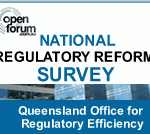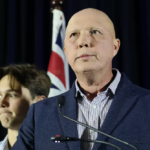The value of housing – a contribution from Karl Marx

Why have we let housing become a commodity subject to the unstable forces of supply and demand? Ian McAuley explains why we should focus more on the use value of a house instead of its mere exchange value.
Open Forum has generated a lively debate on housing affordability. Contributors have given some very creative ideas, well worth pursuing: some on the supply side, some on the demand side, and some which transcend that division.
As with so many public policy issues there is no one cause of the problem and therefore no single solution.
Rather than adding to those specific ideas, I want to step back a little and ask a basic question: why have we let housing become a commodity subject to the unstable forces of supply and demand? We may live with price swings in stock markets, mineral and agricultural commodities, airline tickets – indeed price movements are the essential mechanism by which markets allocate resources efficiently. But should housing be fully subject to the same forces?
Karl Marx distinguished between two concepts of value – use value and exchange value. This is a contribution from Marx the philosopher, reflecting the mainstream of European economic thought, not Marx the revolutionary and social leveller. It’s a distinction used by more recent and conservative European economic philosophers, such as Karl Polanyi, and by Harvard’s Michael Sandel (author of the 2012 work The Moral Limits of Markets), but which is not part of mainstream economic thinking in Australia.
The use value of a house or apartment is the enjoyment I get from its amenity – its comfort and shelter, and it shouldn’t change much over time. If I neglect my house and let it run down, its use value will fall, and if I keep it well-maintained – renovating the kitchen and bathrooms every 30 years or so – its use value will be maintained, and may even be improved a little if I extend it or make some other improvements. I may be thinking not only of my own use, but I may also be guided by s a social norm that one has almost a moral obligation to keep one’s house in good order for future generations.
We all know about the use value of a house, even if we don’t express it in dollar terms.
We become aware of a house’s exchange value when we or our children are seeking to buy a house, or when a real estate agent makes an unsolicited call with an offer.
Variations in the use value of a house are tiny compared with the movements in its exchange value, most notably the trebling in real house prices in our capital cities over the last 30 years. (There has been almost a quadrupling in Sydney.)
Such capital gains in housing come about almost regardless of any effort or risk exercised by the house owner. In that regard these capital gains are quite different from capital gains resulting from investment in a business or shares in a listed company.
Capital gains in housing result almost entirely from the actions of parties other than the owner, most notably public investment in infrastructure, and private investment in places of employment and places of shopping and entertainment. The exchange value of a house (really the land on which it sits) rises because of the new main road or light rail, the new shopping centre, the new place of employment, and so on.
It is therefore possible to mount an argument that any inflation-adjusted capital gain on housing, owner-occupied or investor, should be taxed at 100 per cent, because none of that capital gain has arisen from the effort spent or the risk taken by the owner. (For consistency there could be 100 per cent compensation for those whose houses fall in value in collapsing rural communities – after all it isn’t the home-owner’s fault that the local milk factory, high school or slaughterhouse closes. That would also help overcome the problem of housing keeping people tied to dying communities.)
An ideal of absolute price stability will never be achievable but it could be the benchmark against which policy success or failure is measured.
One path towards stability and affordability would be for governments to rely more on annual charges – rates and land taxes – as means of financing urban amenities. For greenfield developments it would mean not including local infrastructure in the purchase price and allowing those costs to be paid off over future years in the form of rates and land taxes.
By economic logic, the expectation that the future will see higher rates and land taxes should depress the market price of all houses. Rationally, that depression should be the present value of those higher rates and charges. An expectation of a $5000 rates charge should depress the purchase price by $100 000 at a five per cent real discount rate. After all the aim of such a policy should be to stabilise prices, not to raise revenue.
Practically, of course, there are issues to do with retirees and others who would find such annual charges burdensome – particularly when they have paid top dollar for their houses. There would need to be transitional measures.
Former Treasury Secretary Ken Henry was strong on the idea of taxing immovable assets – they’re the hardest to evade. And the ACT, which has the benefit of having no division between state and local government, is slowly increasing rates on established houses while lowering transfer taxes on houses.
But the more basic reform would be to try to change social norms, so that housing is seen in terms of use value, rather than exchange value.
Surveys show that people expect house values to go on rising, and politicians realise that owner-occupiers feel better off when the value of their house rises – an illogical view (unless one is about to emigrate to Detroit or spend the rest of one’s life in a Winnebago travelling around Australia). We need to see housing in different terms – as an asset priced to reflect its utility rather than as a financial asset.
Such a change in thinking, and in associated tax rules (100 per cent tax on inflation-adjusted capital gains), need not deter private investors, because there would still be a market for those patient and conservative investors who seek steady (if not spectacular) dividends, rather than capital gains.
When investors seek a stable rental return rather than capital gain there could develop rental markets more along the lines of mainland Europe, where renters can expect to enjoy long leases. There is consensus across the political spectrum that we should have a much better rental market, particularly for corporate investors. (As an incentive to keep rental properties up to date all outlays, even those of a capital nature, could be expensed as tax deductions.)
And those seeking speculative returns can take their money where it may do some good – investing in high-risk-high-return ventures, such as startups.
Housing Affordability Online Consultation:
Q: What can be done to improve housing affordability?
Ian McAuley is a retired lecturer in public sector finance at the University of Canberra and a fellow of the Centre for Policy Development. He has been involved in many aspects of the work of Global Access Partners and its ‘Second Track’ Process.













